Procedures
An overview of the procedural steps, equipment and instruments used in laparotomy.

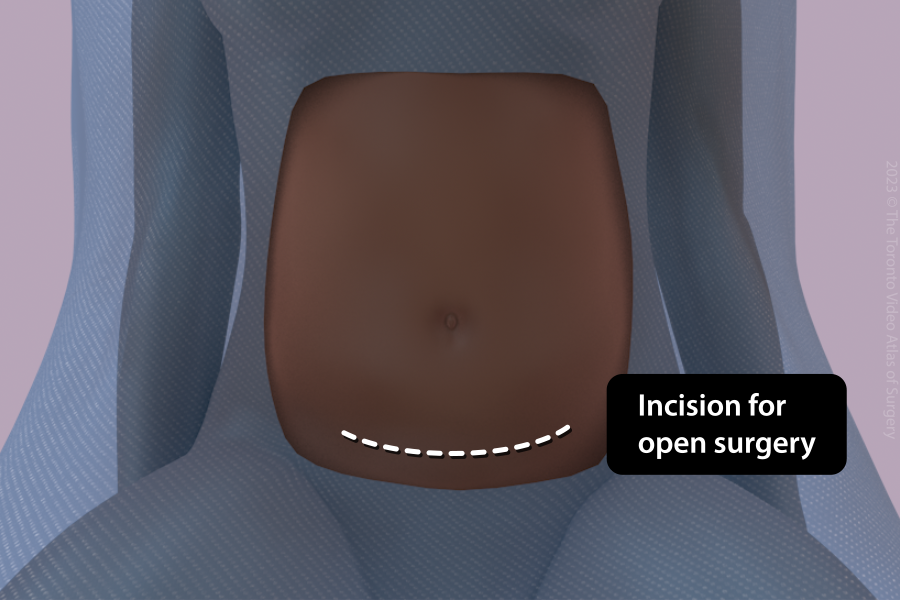
Laparotomy
Laparotomy (or “open surgery”) is a procedure that uses one large incision to operate inside your abdomen and pelvis. A laparotomy may be chosen (instead of laparoscopy) because of large pelvic structures, medical/surgical history, or patient preference. Sometimes a laparoscopy (or “keyhole surgery”) is converted to a laparotomy for patient safety.
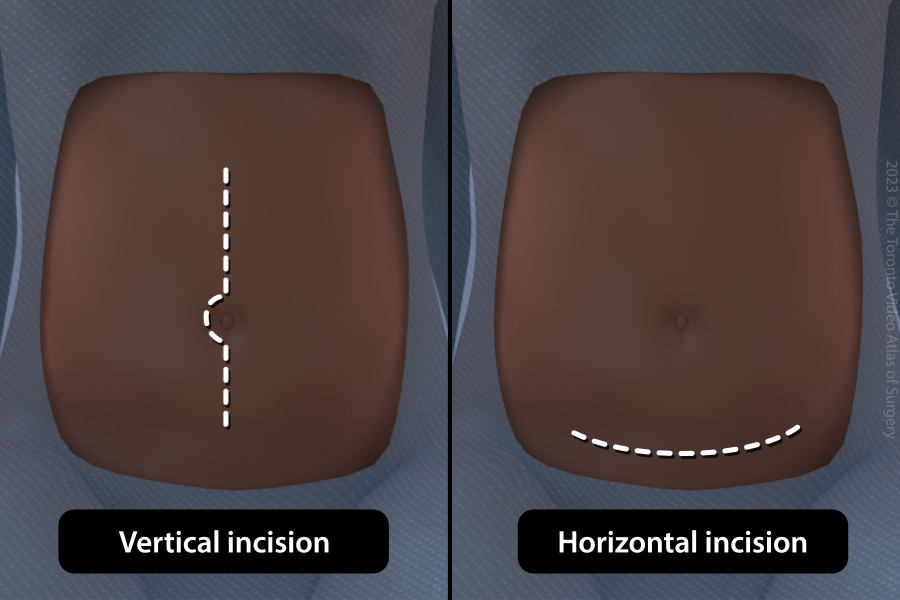
Incision
There are two main incision types in gynecology:
Horizontal (bikini). Typically less painful and more cosmetic.
Vertical/Midline (up and down). May be required for extremely large masses or concerns around scar tissue and visualization. Usually these are below the belly button but may be extended upwards if necessary.
The surgeon may tell you the type of incision before surgery or it may be decided based on your examination once you are asleep.
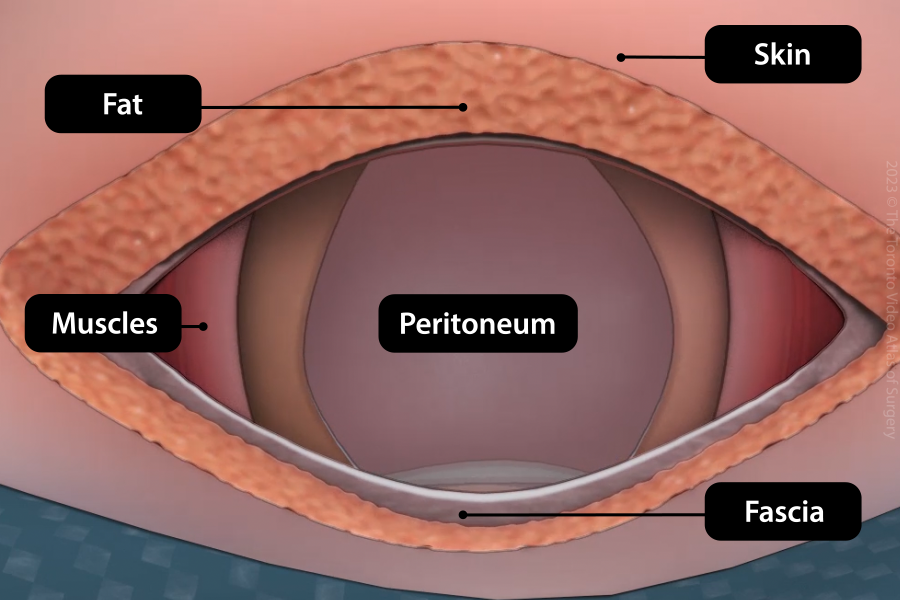
Laparotomy start
The incision must go through several layers to reach your abdomen.
Skin
Subcutaneous tissue (fat)
Fascia (a thick layer that covers the muscle)
Muscles (may be separated or cut depending on the incision)
Peritoneum (a thin layer that covers the abdominal organs)
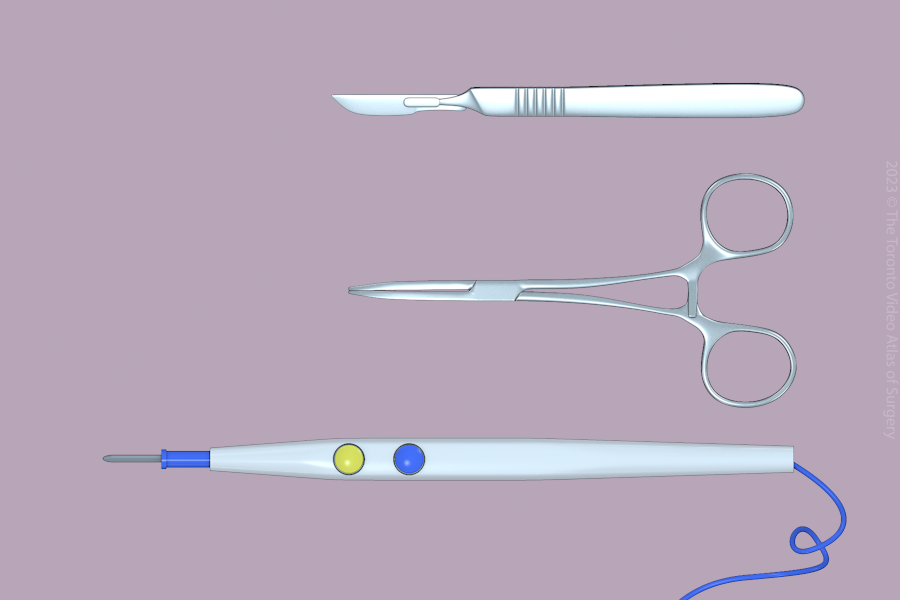
Basic instruments
Your incision may be held open gently with retractors. We operate using several techniques.
Sharp dissection (cutting tissue using scissors or a scalpel)
Blunt dissection (pushing and spreading tissue)
Electrosurgery (cutting and sealing tissues with electricity)
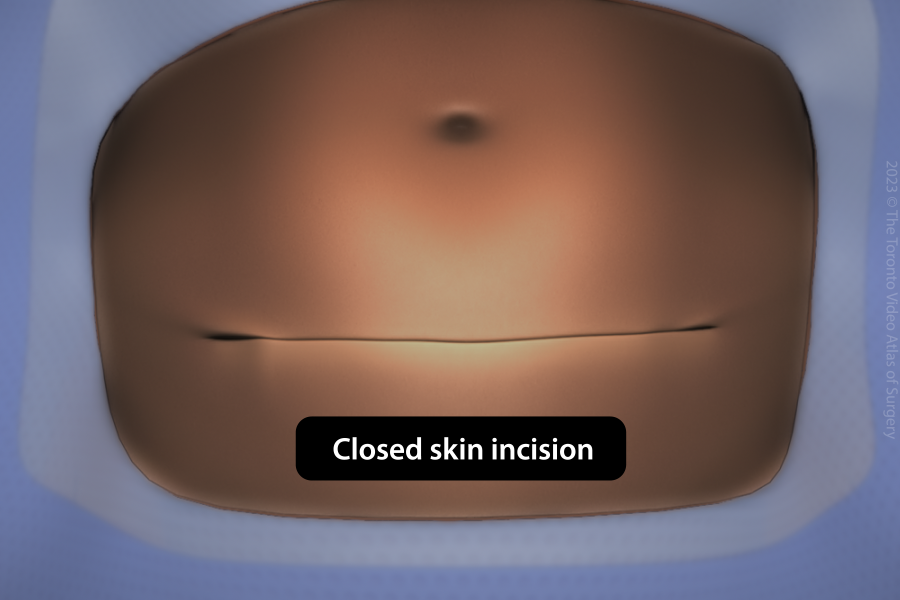
Laparotomy end
The layers below the skin are closed with dissolvable stitches and heal more slowly that the skin. The skin may be closed with dissolvable stitches, staples, or glue. The only incision you will see is your skin.